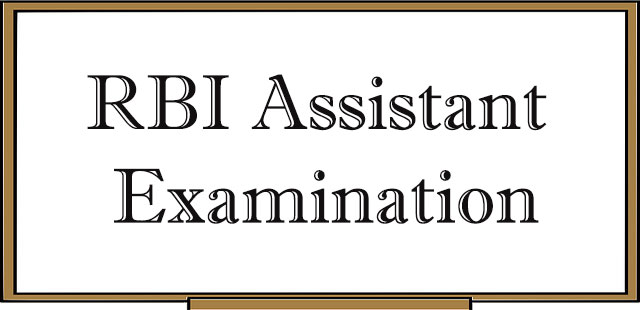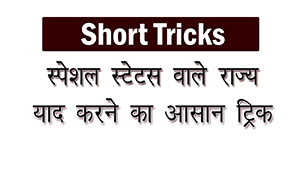-
RBI Assistant Exam - Tips Tricks to Crack this Exam
Updated : 10-Nov-2017
#1. Know the RBI Assistant Exam Pattern In & Out!
There has been a good big change, now Prelims and Mains exam go hand in hand. Previously there was only a single exam. Whether you’ve taken this particular exam before or not, the Prelim & Main pattern has become a familiar one for most banking aspirants now a days. But don’t get too cocky to it. Make sure you understand whether there are sectional time limits to it. Know whether you can switch between sections when possible. And before you mark that answer on a tukka to it, make sure you know how much negative marking is there in it. By and large how many flukes can you afford? So, let’s have a clear look at the exam pattern how RBI prelims exam is like.
Section
No. of
QsMax
MarksDuration
English
30
30
Composite
Time of
1 hourQuantitative
Aptitude35
35
Reasoning
Ability35
35
Total
100
100
In RBI Assistant prelims exam there is no sectional time limit to it. You can allocate timing according to your way in which you are most comfortable. Try out different time management strategies to figure out the best way to solve the paper while attempting the mock test when doing. Keep in your mind about the accuracy which has to pay in the end. If you attend large number of questions but your accuracy is not good, then, it will make no sense at all. Make sure that your accuracy should be above 90% which will give more confidence while you go for the shot. Also, remember that for every wrong answer 0.25 marks will be deducted as penalty – so avoid it.
#2. Know How Much Time You Really Have – Tick Tock
RBI Assistant exam paper has 100 questions for 100 marks in it. You have 60 minutes time duration to solve the paper. So practically, you have 0.6 minutes or 36 seconds per question if we take. This includes the time of 15 seconds you take in reading the question and navigating from one question to another. So this leaves you with 21 seconds per question for it.
But very few from the lot can attempt a total number of 100 questions in 60 minutes. So, you have to be very quick in selecting the questions. This bifurcation gives you a holistic view how you will be performing when sitting in the examination hall. Rather you still have to phase out a few tit-bits of the precious time which might linger on like – exam pressure, nervousness and few more.
Don’t decide how many questions you will attempt beforehand to it. Make sure you know what the expected cut off will be beforehand. Don’t set yourself an actual number of seconds per question time limit for it.
Wait to see the level of questions and then just make sure you don’t spend over 45 seconds per question or 3.5 minutes on a comprehension of 5 questions. If you find it easy then start solving it, otherwise move on to the next. This precise and dot to dot timeline gives more clarity how it will look and feel when in exam.
#3. Trick is What You Don’t Attempt!
In the exam, your strategy there should not be such that you start solving the question as soon as it appears on the screen, rather start on solving the question you have to first think “Is it worth solving or not?” Only after seeing the question you will get to know the difficulty level of it.
The examiners have a quirky way of hiding the easy questions at the end. While you may come across some questions at the beginning that are really time consuming. The only way to make sure you maximize your score is by taking a look at all the questions and picking the ones you want to solve at first.
Don’t get stuck on the tricky, tough questions and don’t waste your precious time for it. But suppose you didn’t realize it was a tricky question when you started, then what to it?
If you have already spent a good amount of time on the question and still are unable to solve it, don’t get disheartened to it. Don’t let your ego get in the way to it. Don’t think about how much time you’ve already “wasted”. JUST MOVE ON!!! This will definitely make sure you succeed.
#4. Plan your Execution Section-Wise:
Different sections take different time in exam. To see the time that you should ideally allot to each section and the exact break-up of how to manage your overall time in the exam, see these tips as well :
Now that the question-wise time-management is taken care of above, try to attempt the questions according to their weight-age and priority. In English, attempt the RC, Error Spotting, Cloze Test and Phrase Replacement first ones. Then move on to para jumbles and more, etc.
Similarly, in Reasoning, keep the puzzles for the last and try to attempt short passages (with 2-3 questions) and standalone questions first to avoid time. If you find independent questions easier to attempt in start then you should attempt those questions in the exam first. In Quantitative analysis too, attempt simplification, DI, Quadratic equation and Number series, Algebra, Profit and Loss and Ratio and Proportions before moving on to other topics of exam.
#5. Go the exam with a Positive Attitude & Expect Surprises
Now that we have laid down a clear path way - strategy, you are sure about what to prepare and how to prepare for it. More often than not, the exam paper is set to present you with surprises coming your way. So if you come across questions you’ve never even seen before, stay calm and breathe! Calmly solve the question. When you are calm you are able to think more clearly and confidently be able to crack the exam in more ripened way to it than the latter.














